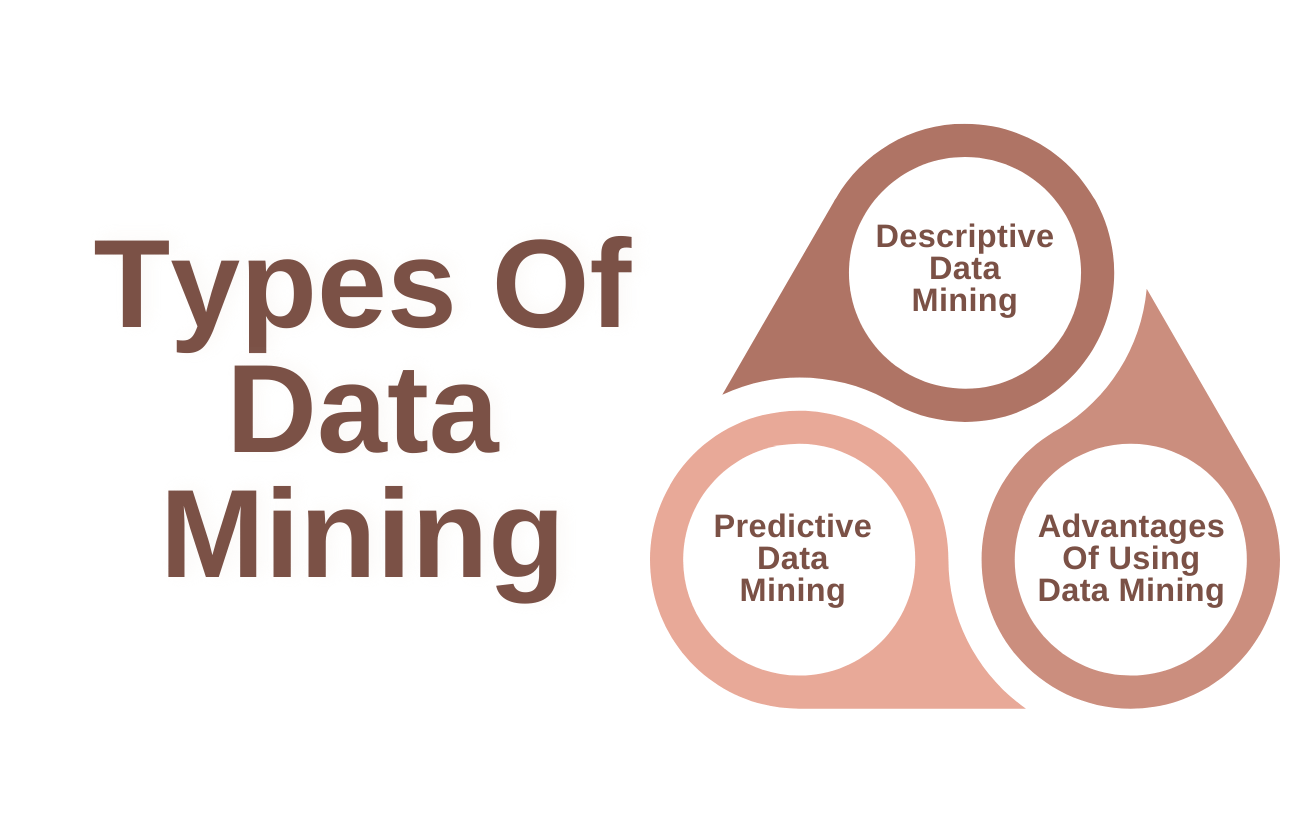Types of Data Mining

Data mining is a process of discovering patterns, correlations, and insights from large datasets. There are several types of data mining techniques, each serving different purposes.
-
Classification:
- Involves categorizing data into predefined classes or groups.
- Uses algorithms to assign new data points to existing classes.
-
Regression:
- Focuses on predicting a continuous variable based on other variables.
- Utilizes statistical methods to establish relationships between variables.
-
Clustering:
- Aims to group similar data points together based on certain characteristics or features.
- It helps identify natural patterns within the data.
-
Association Rule Mining:
- Finds interesting relationships or associations among variables in large datasets.
- Commonly used in market basket analysis to discover patterns in consumer behavior.
-
Anomaly Detection:
- Identifies unusual patterns or outliers in the data.
- Useful for detecting fraud, errors, or other irregularities.
-
Sequential Pattern Mining:
- Analyzes sequences of events or patterns over time.
- Often used in applications like predicting customer behavior based on their past actions.
-
Text Mining (Natural Language Processing):
- Extracts valuable information and patterns from unstructured text data.
- Involves techniques like sentiment analysis, topic modeling, and document clustering.
-
Spatial Data Mining:
- Focuses on discovering patterns and relationships in spatial data.
- Commonly used in geographic information systems (GIS) for location-based analysis.
-
Web Mining:
- Analyzes data related to user behavior on the web.
- Includes techniques for web content mining, web structure mining, and web usage mining.
-
Time Series Analysis:
- Deals with analyzing time-ordered sequences of data.
- Useful for predicting future trends based on historical data.
These types of data mining techniques are often used in combination to gain a comprehensive understanding of complex datasets. The choice of the technique depends on the specific goals and characteristics of the data being analyzed.
Thank you.

